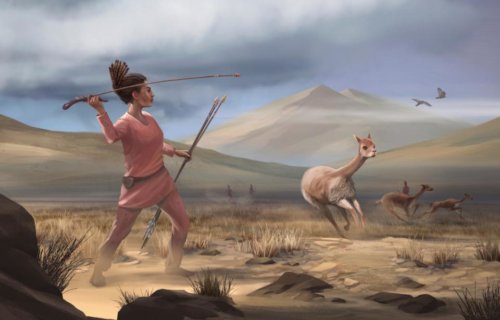DAVIS, Calif. — Since the dawn of time, it’s been the belief that men hunt and women gather. Now, however, a fascinating new study just released by the University of California, Davis finds that women living 9,000 years ago within the Andes Mountains of South America were indeed the real hunters.
A female burial ground was recently discovered within those mountains that strongly suggests the women buried there were big-game hunters.
“An archaeological discovery and analysis of early burial practices overturns the long-held ‘man-the-hunter’ hypothesis,” says lead study author Randy Haas, assistant professor of anthropology, in a university release.
“We believe that these findings are particularly timely in light of contemporary conversations surrounding gendered labor practices and inequality,” he continues. “Labor practices among recent hunter-gatherer societies are highly gendered, which might lead some to believe that sexist inequalities in things like pay or rank are somehow ‘natural.’ But it’s now clear that sexual division of labor was fundamentally different — likely more equitable — in our species’ deep hunter-gatherer past.”
Were all women during this period hunters?
Back in 2018, during an archeological excavation in Peru, researchers discovered a burial ground containing an apparent “hunting toolkit” of sharpened, animal-processing tools. In these ancient times, studies find people were usually buried with the tools and objects they used most often in life. So, it became clear that whoever was buried there had been a hunter. Here’s where things get interesting; researchers say the buried hunter appears to be female. This determination was made by the team’s osteologist, as well as a dental protein analysis.
In a vacuum, this discovery really only confirms that one woman from that time period was a hunter. Is it possible however that hunting wasn’t all that uncommon among ancient females as a larger demographic after all? To find out, researchers examined burial records across North and South America from the late Pleistocene and early Holocene periods.
That analysis ended up identifying 429 buried people from 107 different locations. Among those, 27 had been buried with some hunting tools (15 men and 11 women).
These findings “warrant the conclusion that female participation in early big-game hunting was likely nontrivial,” the study’s authors write.
According to the analysis, roughly 30 to 50 percent of women living in these areas at that time were hunters. Those numbers are much higher than the rate of female hunters in later human societies. This suggests somewhere along the line in human history, women shifted more toward a “gathering” approach.
The study is published in Science Advances.
